New York City Mayor Eric Adams and the Trust for Governors Island announced yesterday the winning consortium of institutions led by Stony Brook University that will develop a first-of-its-kind $700 million urban climate campus on Governors Island, a 172-acre former military installation–turned-recreational and cultural hub just off the southern tip of Manhattan in Upper New York Harbor. Focused on climate research, education, solutions development, public programming, and green jobs training, the Stony Brook-anchored New York Climate Exchange concept was selected over finalist proposals from Northeastern University and CUNY and The New School.
Joining Stony Brook, a public research university on Long Island that serves as a flagship institution of the State University of New York system, is a sizable list of core partnering organizations on the Climate Exchange team (IBM, the Georgia Institute of Technology, Pratt University, Pace University, and the University of Washington to name just a few) and Skidmore, Owings & Merrill (SOM). The firm is designer of the 400,000-square-foot campus that, as envisioned by Trust for Governors Island president and CEO Clare Newman in a statement, will function as “a place where ideas come to life and hopeful solutions to the climate crisis become reality.”
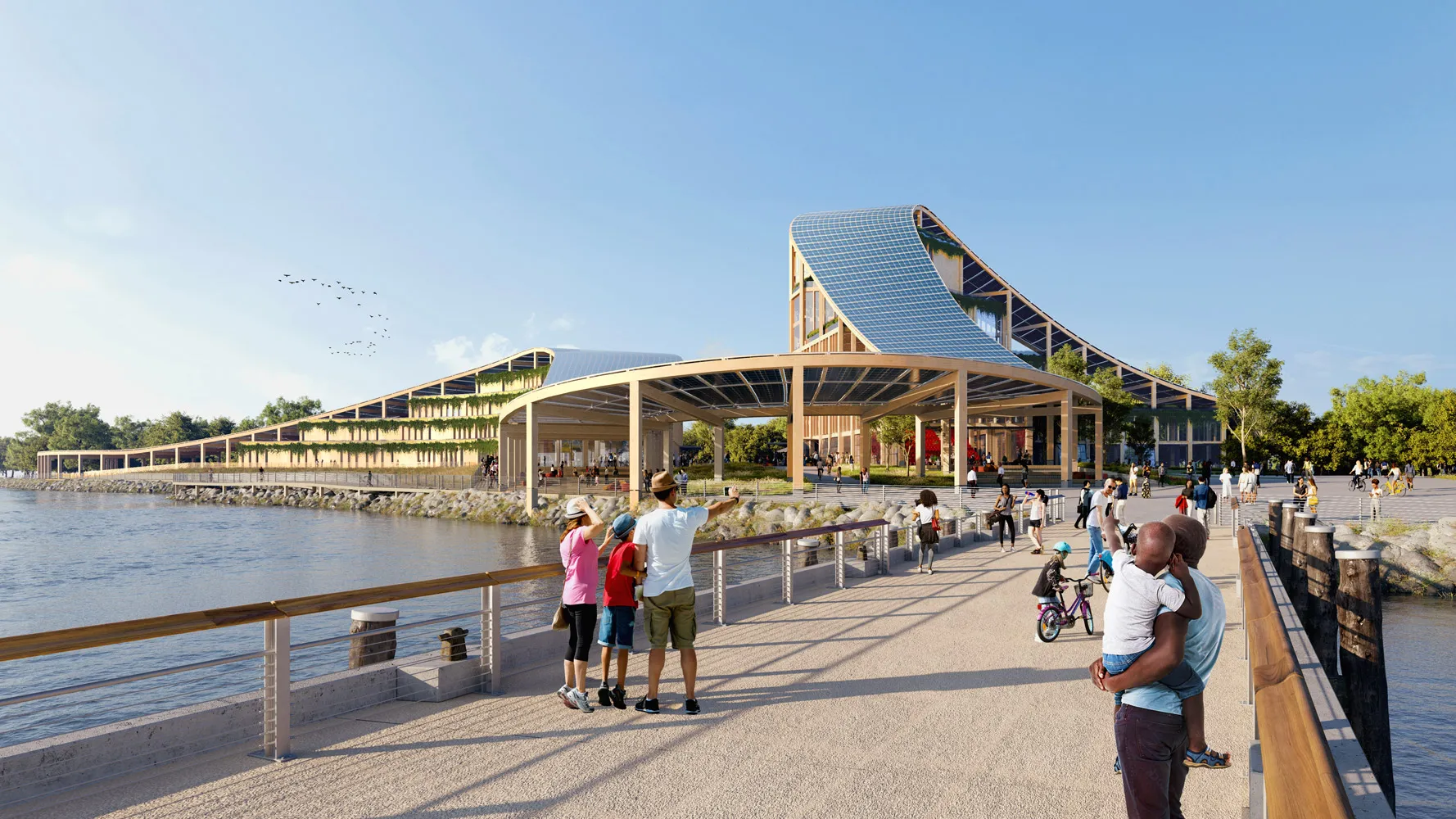
Renovated Yankee Pier leading toward a new public plaza and mass timber academic and research buildings
at the Exchange. Images © SOM | Brick Visual
Leading a larger design team that includes Mathews Nielsen Landscape Architecture, Buro Happold, and Langan Engineering, SOM describes the net-zero energy Climate Exchange as an “engaging and interactive living laboratory” that will incorporate, myriad climate-friendly strategies including on-site solar power generation, mass timber construction, and the careful reuse of existing structures including Liggett Hall, a landmark former barracks building by McKim, Mead & White. The pair of new mass timber research and academic buildings that will be constructed for the Climate Exchange campus will be located on three acres within Governor Island’s eastern development zone adjacent to the island’s Navy Pier.
“Complementing the natural landscape of Governors Island and the urban landscape of New York City, the design weaves new architecture into the island’s beloved park to create a living laboratory for research, education, and public enjoyment,” the firm expressed in a press statement.
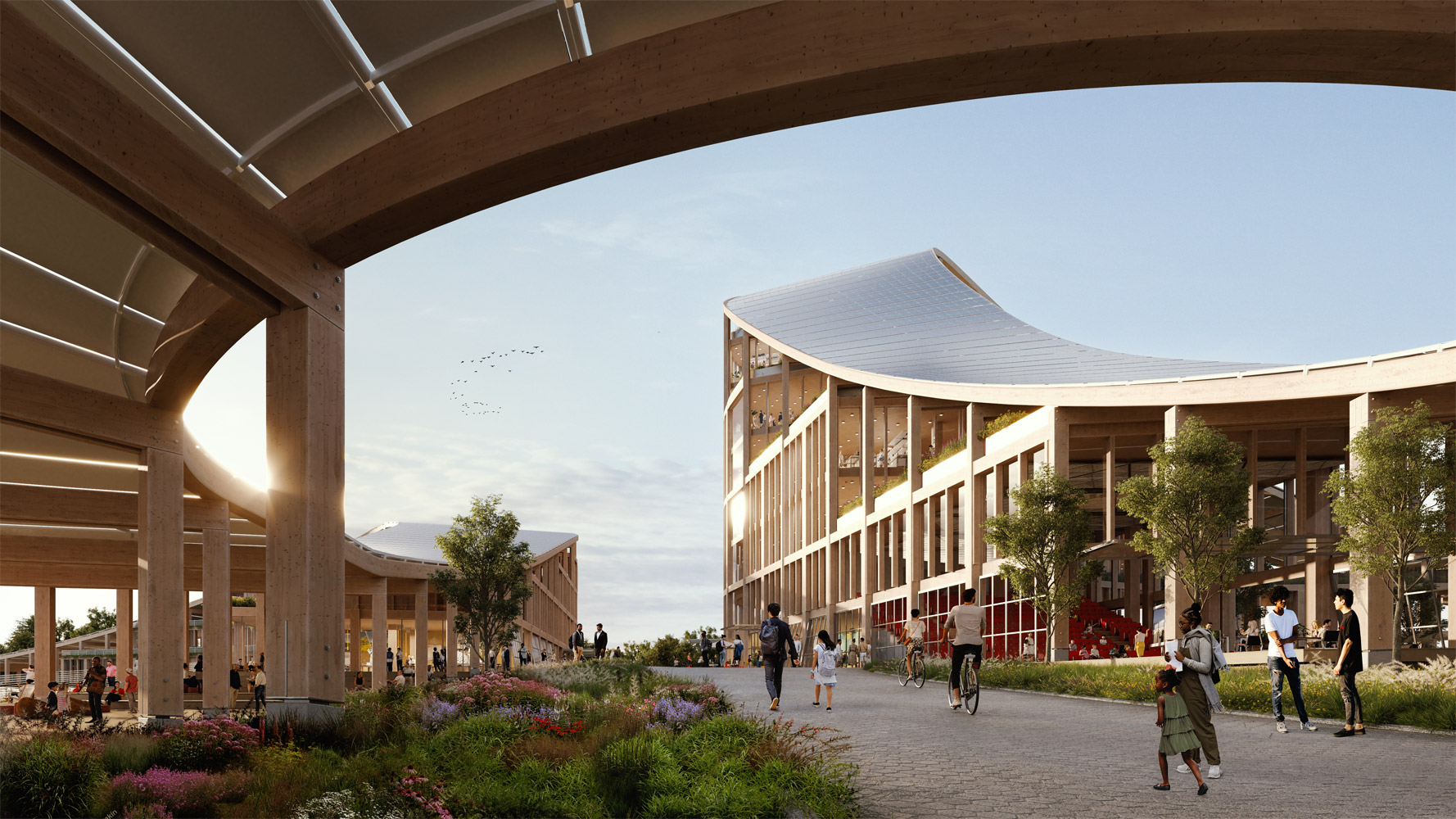
Auditorium and classroom space will populated the two new mass timber buildings Image © SOM | Brick Visual
Housed within the campuses’ all-electric structures, both of SOM’s two newly constructed buildings and those adapted for new use, will be classroom space, research labs, exhibition galleries, auditoria, greenhouses, housing, and 4.5 acres of new public space generated within the first project phase. Marquee facilities set to include a so-called Research and Technology Accelerator and a workforce development center focused on training those disproportionately impacted by the adverse effects of climate change for green economy jobs.
Additionally, the Climate Exchange campus is planned to include the first new buildings in New York City to meet stringent Living Building Challenge standards and will meet all of its non-potable water needs with rainwater and treated wastewater. It’s also slated to be the first site in the country to achieve True Zero Waste through the diversion of 95 percent of waste from landfills.
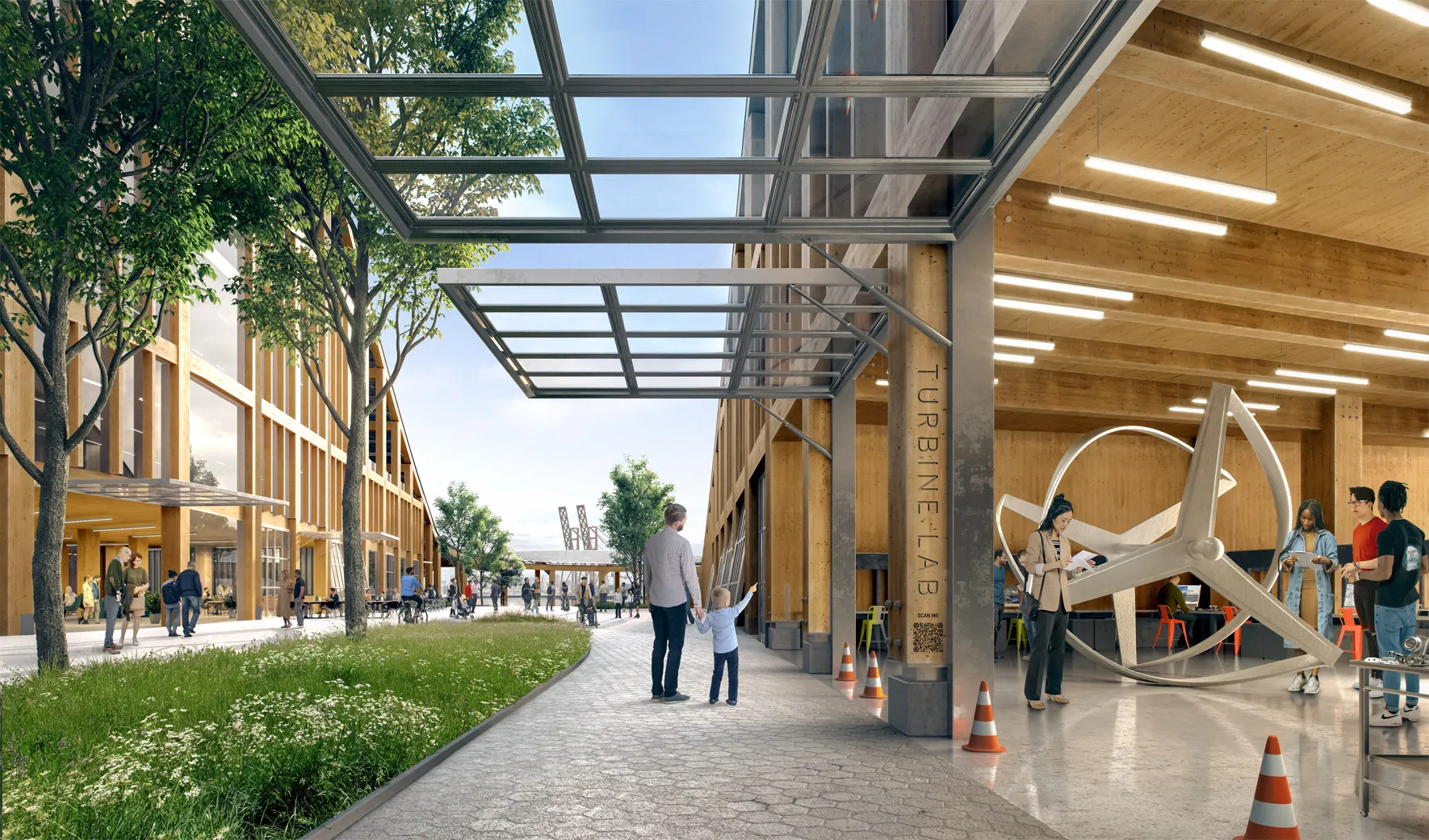
1
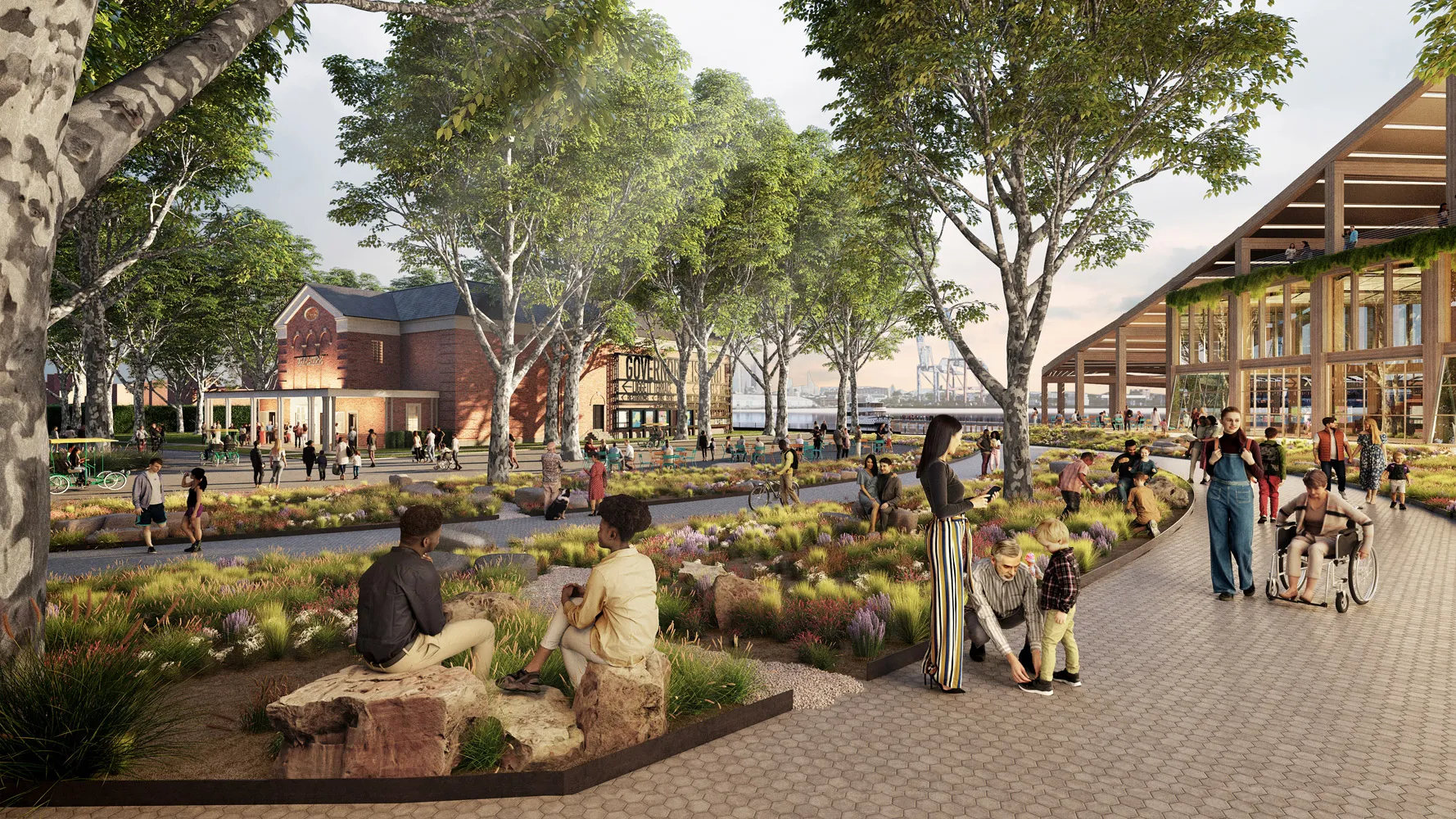
2
View across a new public space along Division Road, looking toward the island's renovated historic theater (2) at the SOM-designed climate hub (1). Images © SOM
“Our design for this new campus embodies the stewardship necessary to solve the climate crisis by weaving sinuous mass timber pavilions through the rolling landscape of the park and reusing the historic building fabric of Governors Island,” elaborated SOM design partner Colin Koop. “Together, these spaces will cultivate advances in climate research and pilot new technologies that can be deployed across the city, and eventually the world.”
The first phase of the New York Climate Exchange is slated to begin construction in 2025 with an anticipated completion date in 2028.

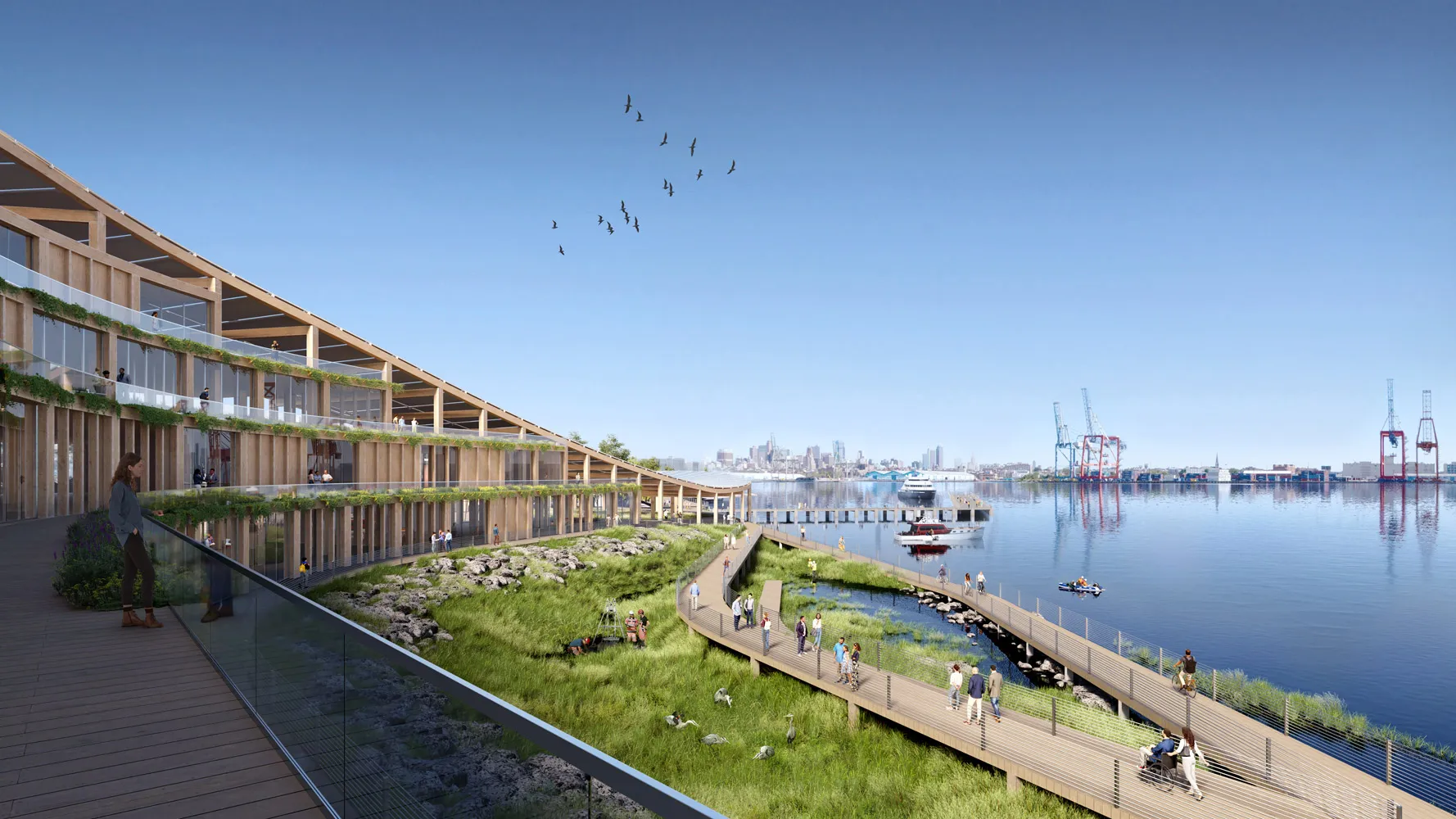
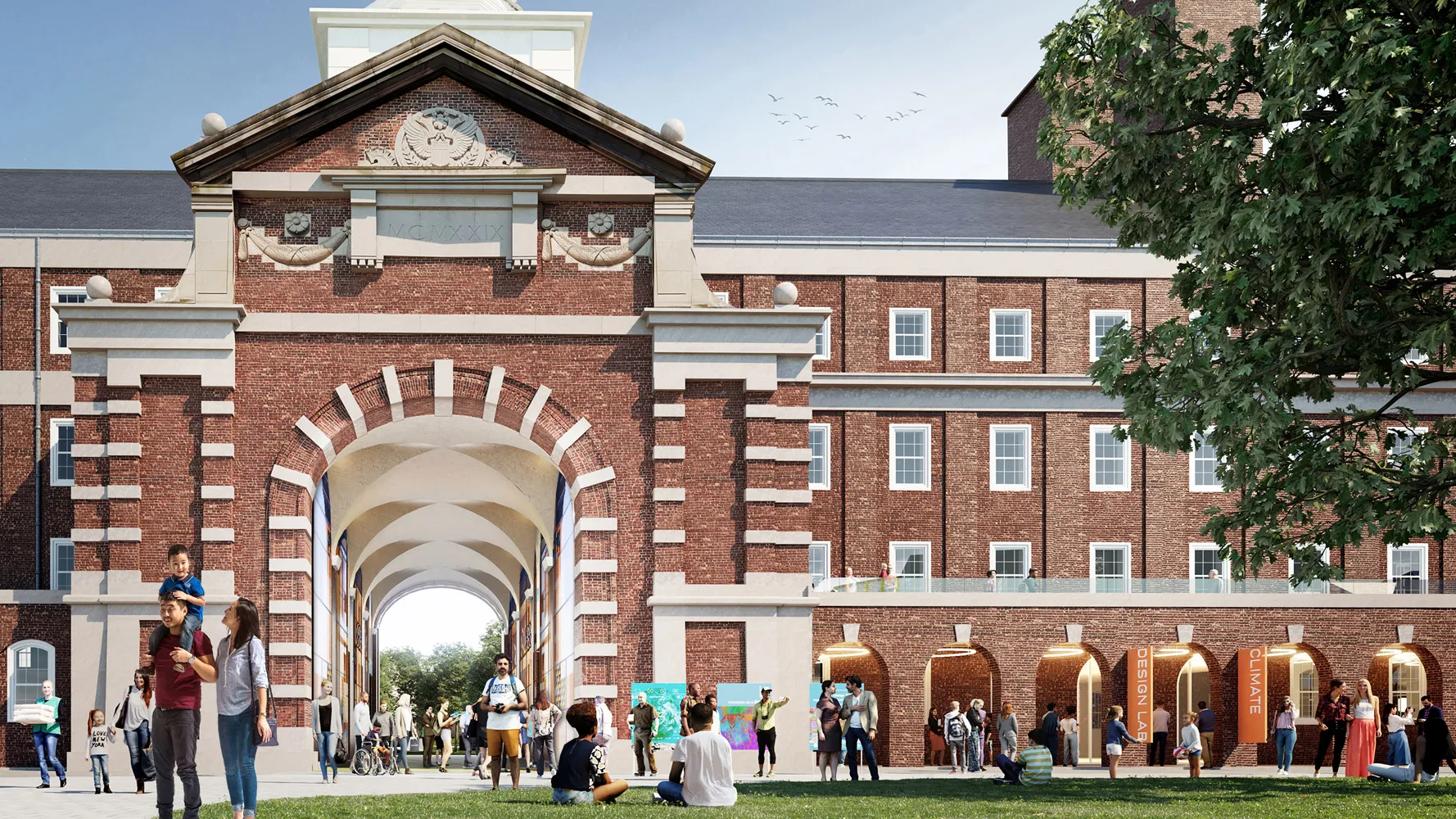
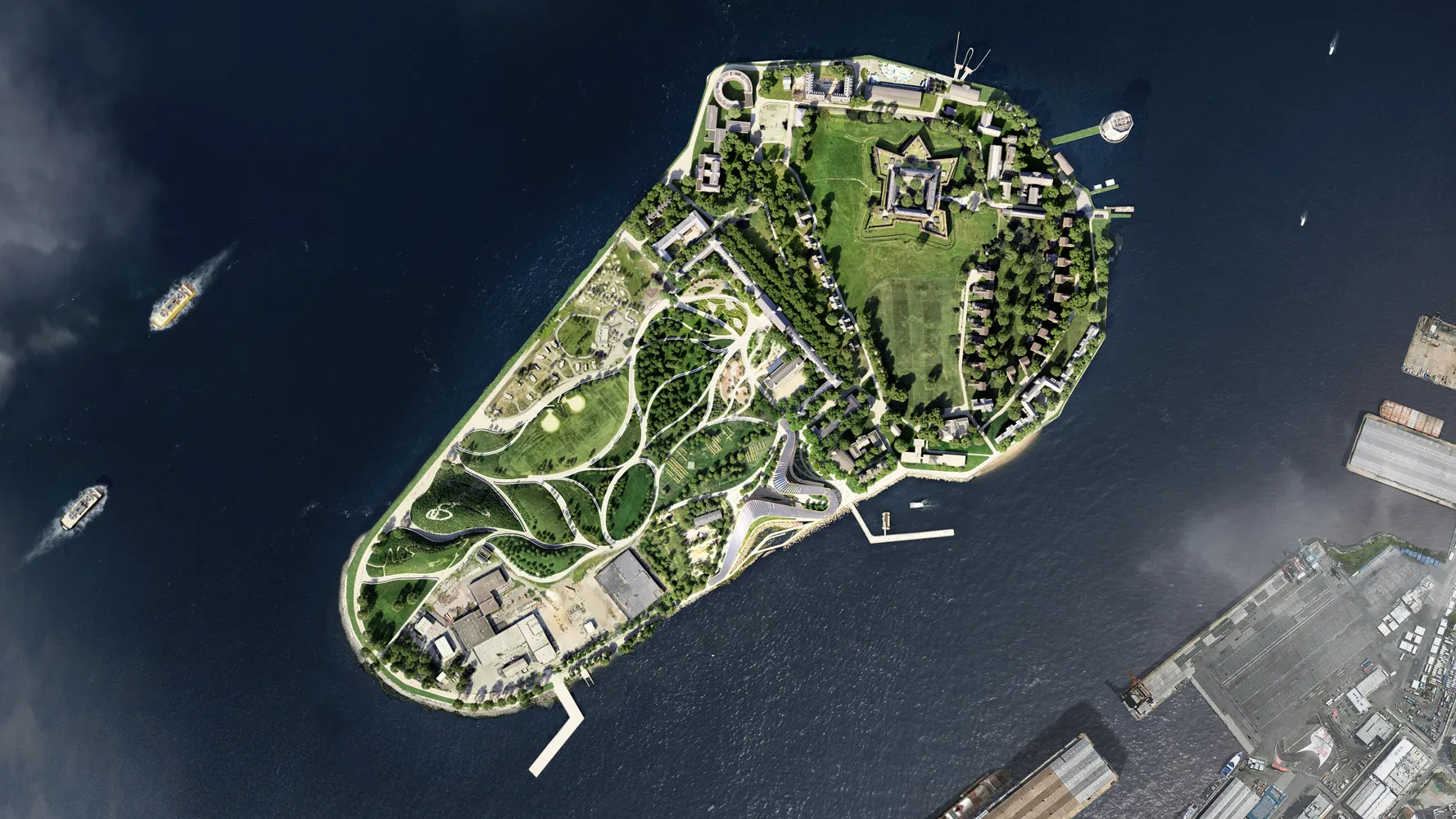





Post a comment to this article
Report Abusive Comment